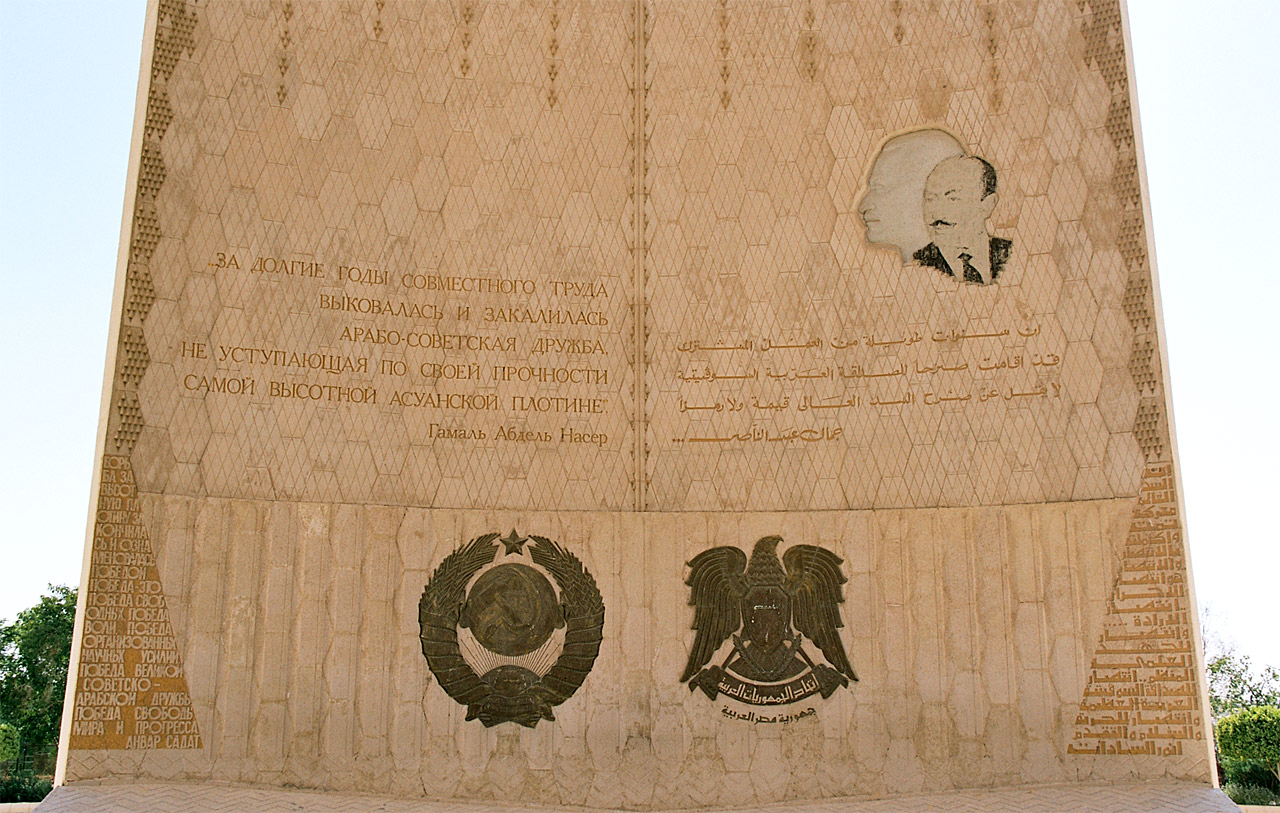Before the dams were built, the Nile River flooded every year during late summer, when water flowed down the valley from its East Africandrainage basin. These floods brought high water and natural nutrients and minerals that annually enriched the fertile soil along the floodplain and delta; this had made the Nile valley ideal for farming since ancient times. Because floods vary, in high-water years the whole crop might be wiped out, while in low-water years widespread drought and famine occasionally occurred. As Egypt's population grew and conditions changed, both a desire and ability developed to control the floods, and thus both protect and support farmland and the economically important cotton crop. With the reservoir storage provided by the Aswan dams, the floods could be lessened and the water stored for later release.
(...)
The Soviets also provided technicians and heavy machinery. The enormous rock and clay dam was designed by the SovietHydroproject Institute along with some Egyptian engineers. Twenty-five thousand Egyptian engineers and workers contributed to the construction of the dams.
On the Egyptian side, the project was led by Osman Ahmed Osman's Arab Contractors. The relatively young Osman underbid his only competitor by one-half.
- 1960: Start of construction on 9 January
- 1964: First dam construction stage completed, reservoir started filling
- 1970: The High Dam, as-Sad al-'Aali, completed on 21 July
- 1976: Reservoir reached capacity
- 2011: plans to build extension to dam








